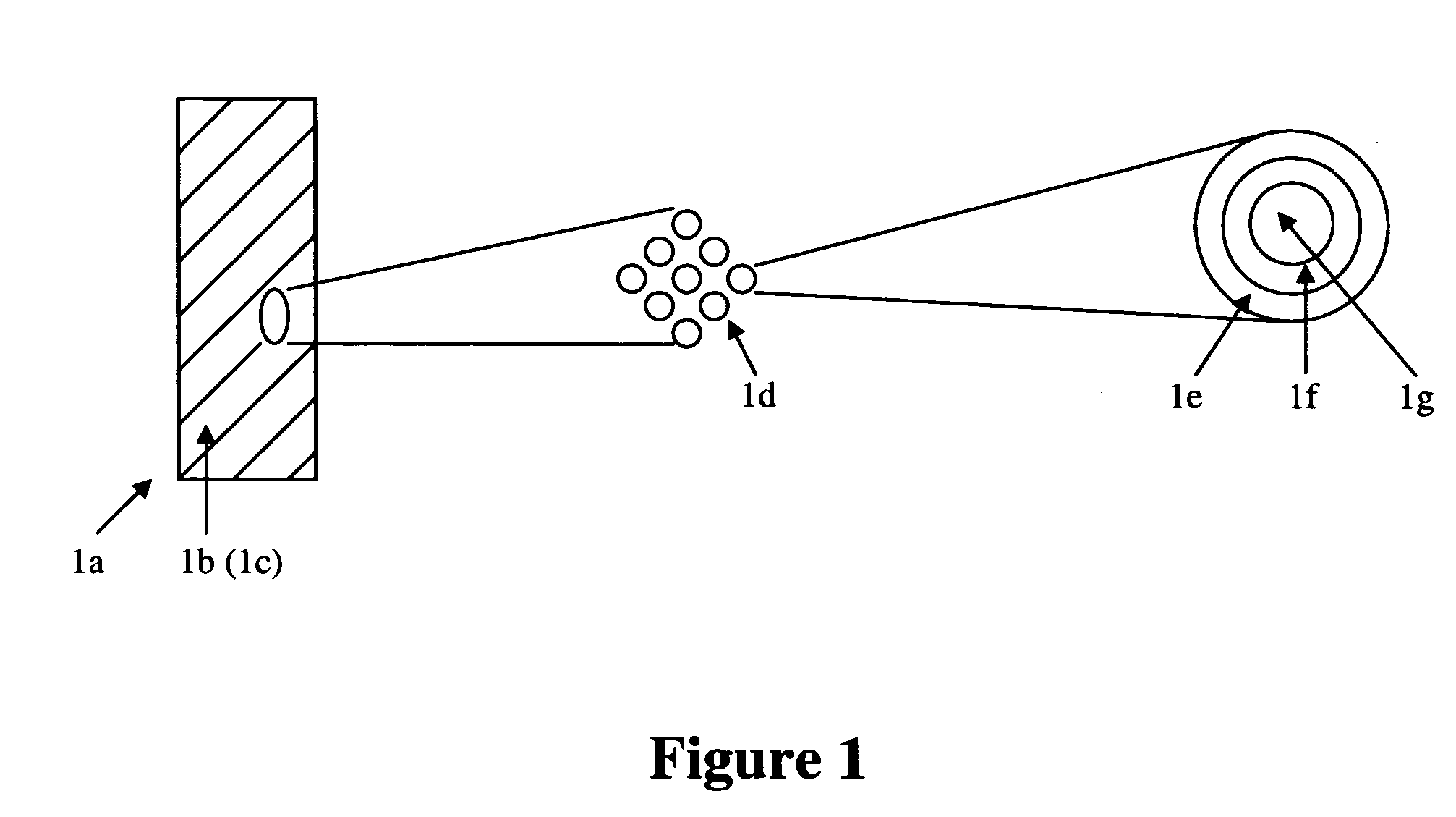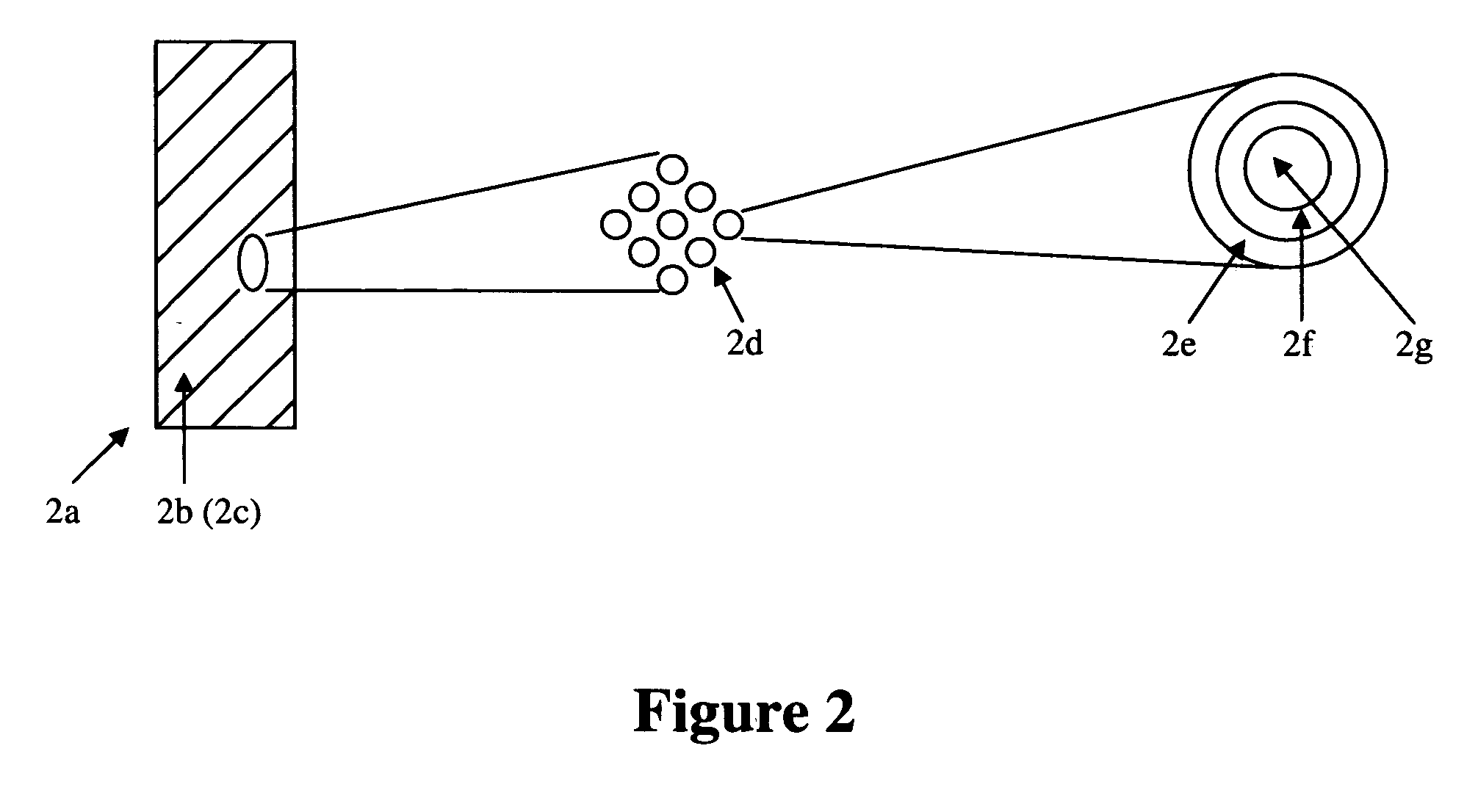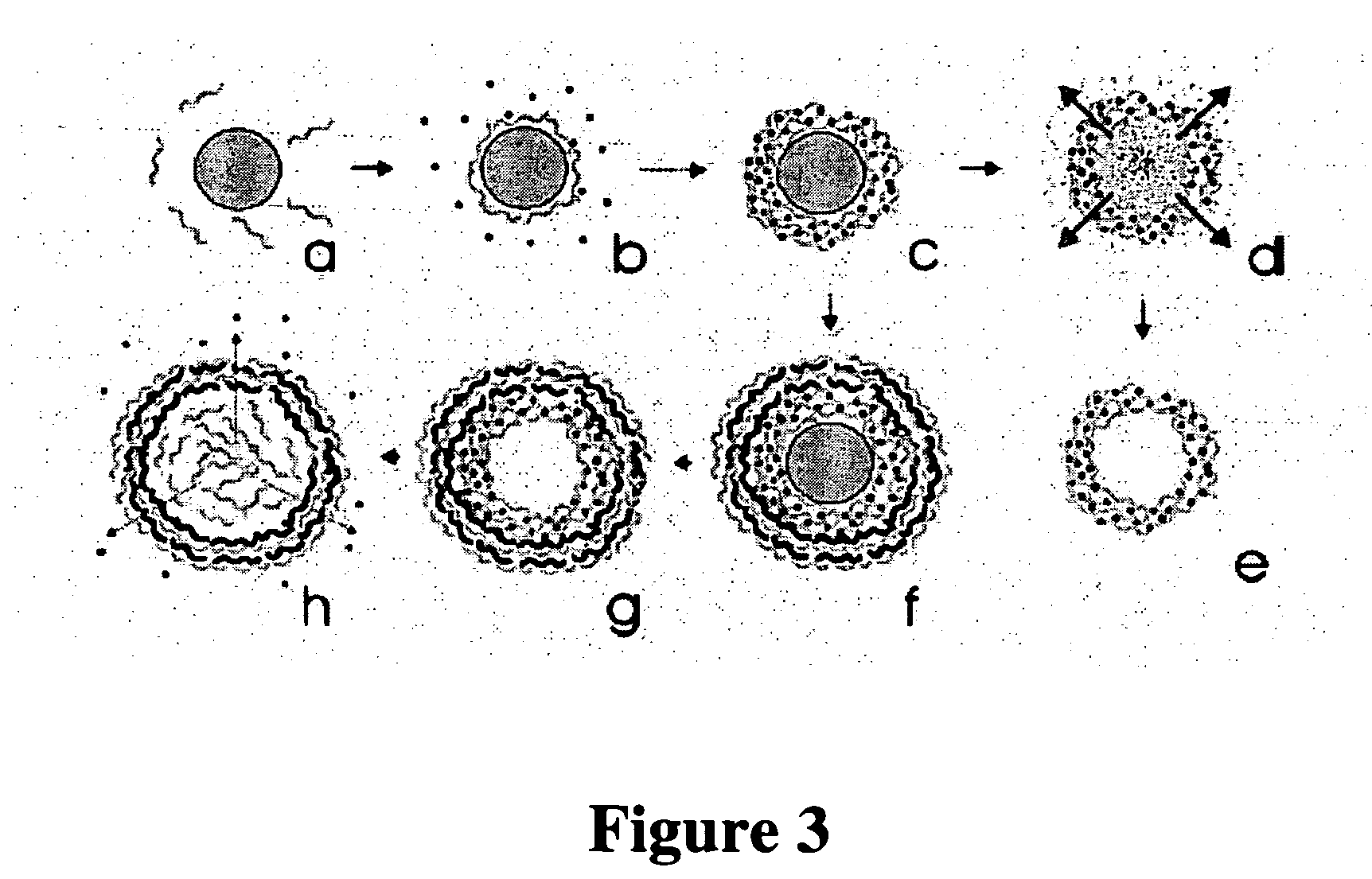Stents with drug eluting coatings
a technology of stents and coatings, applied in the field of medical devices, can solve the problems of re-narrowing, stressing the wall to the point of creating additional trauma, and additional trauma to the body lumen upon deployment of the stents
- Summary
- Abstract
- Description
- Claims
- Application Information
AI Technical Summary
Benefits of technology
Problems solved by technology
Method used
Image
Examples
Embodiment Construction
[0039] The present invention relates to medical devices comprising one or more coatings that elute therapeutic agents. Specifically, the one or more such eluting coatings comprise at least one polymeric materials incorporating a plurality of particles such that each particle comprises at least an outer layer, at least an inner layer, and at least a core containing a therapeutic agent. In a specific embodiment, a coating comprises a first polymeric material comprising particles that comprise an outer layer comprising a second polymeric material, an inner layer comprising a third polymeric material, and a core comprising a therapeutic agent. The first, second, and third polymeric materials can be either hydrophilic or hydrophobic. The therapeutic agent can be either hydrophilic or hydrophobic. In a specific embodiment, the third polymeric material and therapeutic agent are hydrophilic. In a specific embodiment, the third polymeric material and therapeutic agent are hydrophobic. In a s...
PUM
| Property | Measurement | Unit |
|---|---|---|
| time period | aaaaa | aaaaa |
| size | aaaaa | aaaaa |
| diameter | aaaaa | aaaaa |
Abstract
Description
Claims
Application Information
 Login to View More
Login to View More - R&D
- Intellectual Property
- Life Sciences
- Materials
- Tech Scout
- Unparalleled Data Quality
- Higher Quality Content
- 60% Fewer Hallucinations
Browse by: Latest US Patents, China's latest patents, Technical Efficacy Thesaurus, Application Domain, Technology Topic, Popular Technical Reports.
© 2025 PatSnap. All rights reserved.Legal|Privacy policy|Modern Slavery Act Transparency Statement|Sitemap|About US| Contact US: help@patsnap.com



